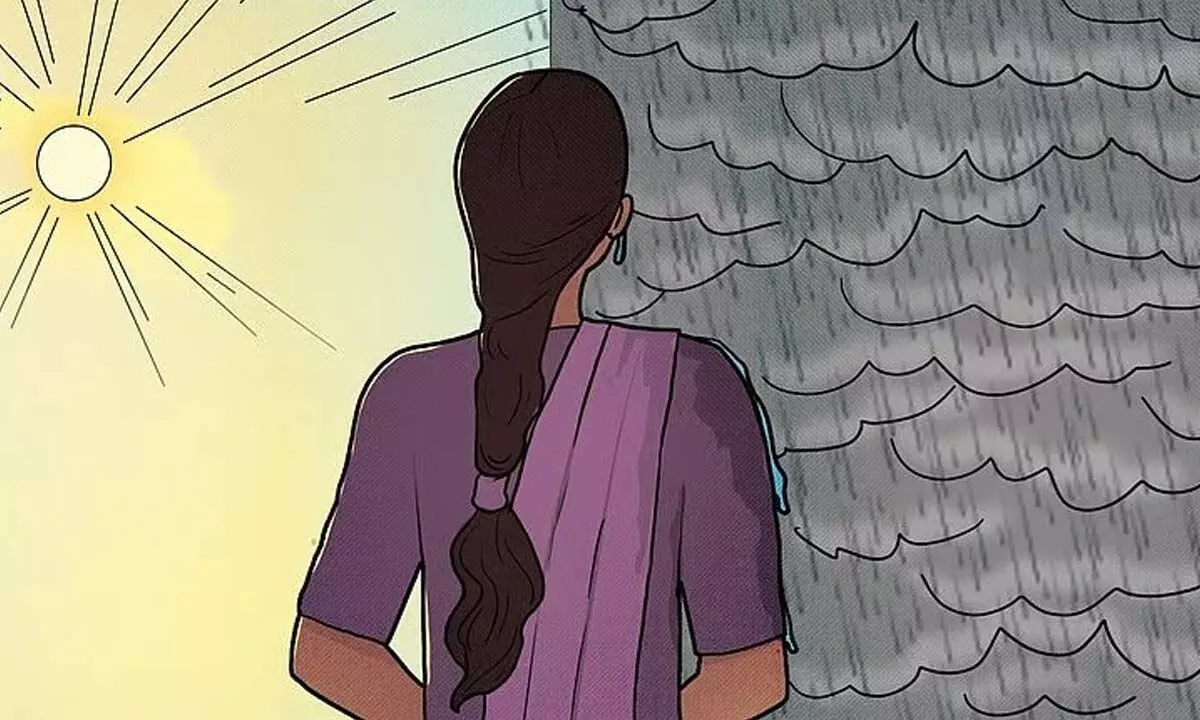A SAGA OF RESILIENCE

Women are the worst impacted by environmental degradation and so are mindful about how to build a better tomorrow. This was the first learning of my environmental career. When I graduated from school in the early 1980s, environment was hardly an issue of public concern. It was certainly not a profession that my friends thought of joining. But environmental issues had reached the global arena. In 1972, the first major world conference on the environment was held in Stockholm. India’s then prime minister, Indira Gandhi, was one of the few developing world leaders who attended it. It was also in the 1970s, that news came of the movement in the remote Himalayas where women hugged trees to protect them from woodcutters. The “Chipko” movement, as it came to be known, brought consciousness of how the environment was important for the very poor, particularly the women.
My work began with travels to the high Himalayas to understand why the women would want to stop the felling of trees. I began to see the connection between livelihoods and environment. For the millions of women in India, the environment—land, water, forests—was not a luxury; it was about their survival. The gross nature product was more important in their lives than the gross national product. I learnt that rejuvenating the natural asset was the way for economic growth; in fact, it was the way forward for India’s economic growth. The women who participated in the Chipko movement did not hug trees because they did not want them cut by the woodcutters, but because they wanted the first right to cut the trees—it was not a conservation movement but a development movement to build local livelihoods from natural resources.
The early years of my career working with Anil Agarwal (founder editor of the magazine) taught me a lot. We travelled to the villages where communities had come together to build a green future. There I saw the difference that good management of forest and water could make to lives. Anil and I quickly learnt to look beyond trees, at ways to deepen democracy, so that these commons—in India, forests are mostly owned by government agencies but it is the poor, particularly women, who use them—could be regenerated. It became clear that without community participation, planting trees was not possible. For people to be involved, the rules for engagement had to be respected. To be respected, the rules had to be fair.
This initiation helped me understand the challenges of climate change as well. In the same period, data released by a prestigious US research institution convinced our then environment minister that it was the poor who contributed substantially to global warming by doing “unsustainable” things like growing rice or keeping animals. Anil and I were pulled into this debate when a flummoxed chief minister of a hill state called us. He had received a government circular asking him to prevent people from keeping animals. “How do I do this?” he asked us. “Do the animals of the poor really disrupt the world’s climate system?” We were equally foxed. Our work told us that the poor were victims of environmental degradation. Here they were now, complete villains. How?
With this question we embarked on our climate research journey. We quickly learnt that there was not much difference between managing a local forest and the global climate. Both were common property resources. What was needed, most of all, was a property rights framework, which encouraged cooperation. One, the world needed to differentiate the emissions of the poor (from subsistence paddy or animals) from that of the rich (from, say, cars). Survival emissions were not—and could not—be equivalent to luxury emissions. Two, managing a global common meant cooperation between countries. Just as a stray cattle or goat is likely to chew up saplings in the forest, any country could blow up the international climate agreement if it emits beyond what the atmosphere could absorb. Cooperation was only possible if benefits were distributed equally. We then developed the concept of per capita entitlements—each nation’s share of global greenhouse gas emissions—and used the property rights framework to set up rules of engagement that were fair and equitous. We said that countries using less than their share of the global emissions could trade their unused quota and use the incentive to invest in clean energy technologies. In all this, we told climate negotiators to think of the local forest and learn that the issue of equity is not a luxury. It is a prerequisite.
Today, we know that climate change is an existential threat. It is happening and it is making the poor—who have not contributed to the making of the problem—more marginalised. To ensure that growth is equitable and that the poor across the world are not denied their right to development, the key is to invest in creating ecological assets—from rainwater harvesting to better food systems that are resilient. We must also redefine what we mean by resilience—often high-input agricultural systems are productive but less resilient. Farmers are more vulnerable to shocks when their debts are high. We need, therefore, to understand the strength of smallholder agricultural systems that are multi-crop, low-input and built for shocks. And this learning, particularly from women who play a vital but often overlooked role in building resilient food systems, must drive policy and practice of the future.
(Courtesy: https://www.downtoearth.org.in/; Writer is Director General of CSE and editor of Down To Earth, an environmentalist who pushes for changes in policies, practices and mindsets)


